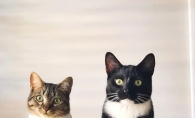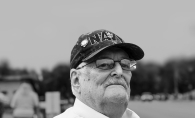Chalk is all the talk in a special workshop at Deephaven Elementary School. “Chalk Talk,” hosted by Wing Young Huie, an internationally acclaimed Minneapolis artist, gives fifth grade students the chance to interact more deeply with each other.
“[Huie] encourages his audience to question what they see. With our children today being exposed to so much media, it’s important for them to become visually literate and understand how what they’re seeing affects their perceptions of what they see,” says Wendy Anderson, visual/media arts instructor at Deephaven Elementary.
During the first part of the workshop, Huie shows students photographs from his own projects. He then opens the floor for discussion, but students tend to avoid talking about the obvious differences. For example, in a photograph depicting a black person and a white person, the students will talk about everything else but what is clearly there, Anderson says.
Huie believes that bringing up evident aspects without shame creates an environment in which there is no right or wrong answer by validating everything everyone sees. In doing so, students gain the ability to look at photographs critically and gain visual literacy, says Huie.
During part two of the workshop, students pair up with someone who they aren’t familiar with and interview them using questions Wing asks when he’s doing his own projects, such as “What are you?” and “What advice would you give to a stranger?” These questions, he says, are not easy for corporate executives to answer, let alone fifth graders.
Huie says this is a way to get into deep conversation while breaking through the barriers of difference and “get outside of their own cultural, individual and technological bubble.” After the dialogue, they suggest to each other what to write on the chalkboards. They then photograph each other with the chalkboards in front of them so they can see the student for who they are and not just for who we see them as, says Anderson.
Anderson hopes the students “take away from this experience that they can ask questions so they can have an understanding of differences so they’re not living in fear, and can just embrace the world for how it really is and enjoy it.”









